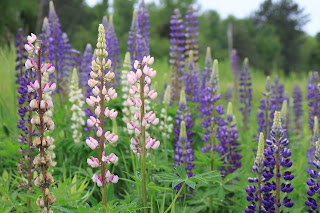 |
| Look Around and Observe Anytime... |
Summer is a good time to observe and build.
What do all animal and people houses have in common? They provide shelter and safety. Otherwise they are very different. Take along a paper pad and colored pencils while on a neighborhood walk and look for animal houses. Count anthills around your home. Their nests have many entries. Why? Are there some with entry holes bigger than others? Why is that? Scuff up a few anthills and check them the next day. Did the worker ants rebuild or make a new one nearby? Check under rocks or logs, too. Look for bird and squirrel nests. Why are they up in the trees? Draw these different houses. They are often very simple shapes.
After a walk children may like to build some houses in the sandbox or on the beach.
 |
| Study All Types of "Houses" |
Another day talk about people houses. Look around your own. Count the windows, doors, and rooms. Young children may want to draw their house. They may want to focus on their bedroom and draw their bed and toys. Children also like to draw their street with cars going by. If they have a pet, they may want to draw its home, too.
This might be a good time to talk about safety in case of fire and the importance of a place outside where the family can meet. Firemen recommend reviewing procedures often.
Then take out the Legos and build some houses for small dolls and super heroes. How will they escape in an emergency? Children may rather
 |
| Get out the Legos! |
Young children love making homes inside with blankets, pillows, a few chairs, and clothespins to tie it all together. Bring in the stuffed animals, a flashlight, a few books and snacks and they will be cozy for the day.
A few books about homes include “Home” by Ellis; “Building a House” by Barton; “Houses Homes” by Morris, and “Goodnight, Goodnight Construction Site” by Rinker.
Photos, Fran Darling, fdarling fotos
More Ideas and Activities....See the authors’ book “Learning Through the Seasons” at area bookstores and grandparentsteachtoo.org. For more help to prepare young children for success in school see the authors’ web site: www.grandparentsteachtoo.org. Also check our audio Podcasts WNMU Radio 90; Youtube video activities; and join us on Pinterest








